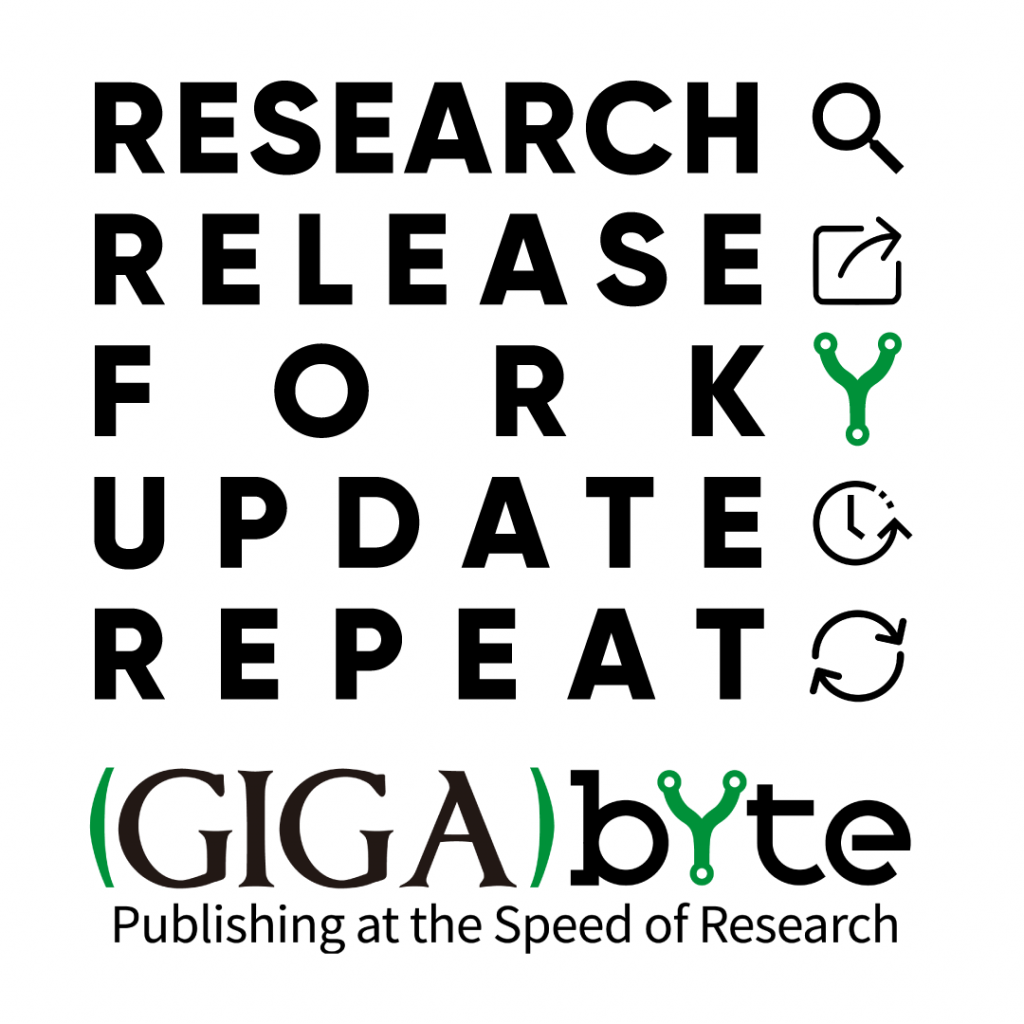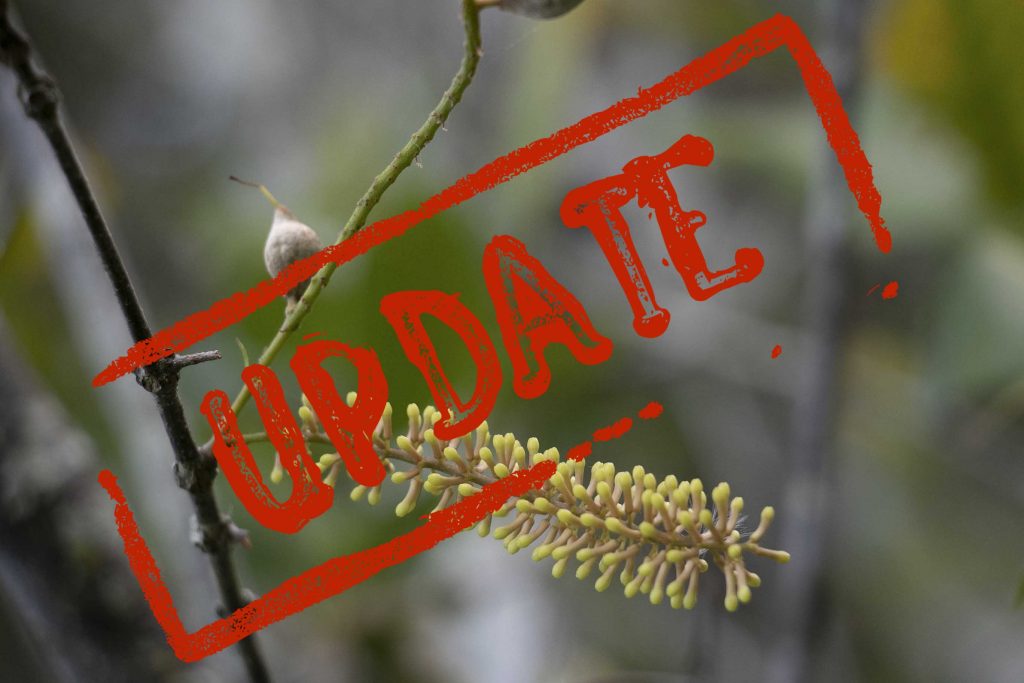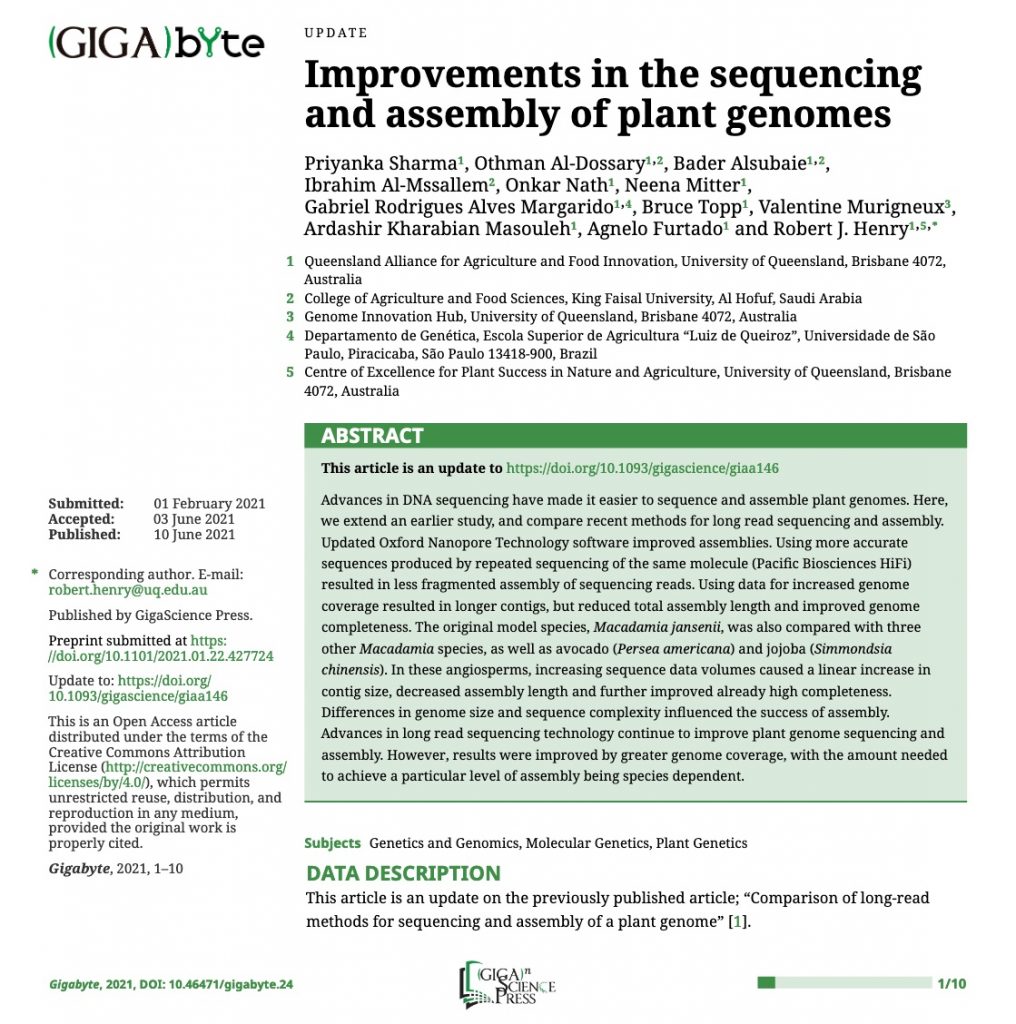Update on Updates. GigaByte’s new article type to speed up science

GigaScience Presses new GigaByte Journal was launched with the goal of speeding up the dissemination of science, publishing at the speed of research. Beyond speeding up the research process by incentivizing the early release of datasets and software/computational workflows by focusing on short descriptions of these two article types (called Data Release and Technical Release), we’ve also tried to greatly speed up the normally laborious publication process. Partly through simple measures like using a more streamlined questionnaire style peer review system, and partly through technological advances by leveraging the ability of our partner River Valley Technologies XML-first platform to near instantaneously produce content on the fly. With the resulting production process taking hours rather than the weeks of traditional publishers.
Using this platform we also have the potential to follow a more iterative, software-centric form of sharing: the CODE, RELEASE, FORK, UPDATE and REPEAT approach. The sharp eyed among you may have noticed the FORK concept being alluded to in GigaByte’s logo. The launch Editorial in the journal announced the next step in this iterative pathway will be addressed with an article type we planned to release in the future, namely an Update article. The time for this is now with the publication of our first Update article in the journal. The paper presenting new benchmarking data for an ongoing study sequencing Macadamia species on multiple platforms from authors from the University of Queensland.

This new Update article type does two things. First, allowing publication of substantive additional data and software versions that are immediately useful to the community but would typically have a much-delayed release or indeed might never be released because the authors need to carry out and add analyses to make these “publishable” in the current publishing paradigm. Serving as a way to publish new data or software outputs from a previously published article at a time point where there is useful information to share but there are little-to-no new analyses, conceptual findings, or major software upgrades completed. Second, greatly reduce the time to write and peer-review articles as the majority of the narrative (e.g. the Introduction and similar sections) of an Update does not change in any substantive way and can be cited and linked to instead of rewritten, allowing (the original) reviewers to focus only on the added information in assessing the manuscript. Peer review is also easier as the original peer reviewers and our curators can be quickly consulted with to see if the additional data is sound and useful, without having to do a full review of a “fresh” publication.
Planting the seeds of a new form of scientific communication
The paper in question is a sequencing benchmarking study using one of the world’s rarest tree species as a reference, Macadamia jansenii being a critically endangered species of macadamia which was only discovered in the 1980’s and described as a new species in 1991. Investigating the latest long-read sequencing technologies, all the different software and algorithms that you can use to build a reference, and then applying each of them to the same sample to find out what worked best. On top of the insight into genome assembly, this new work also gives this inedible Macadamia nut tree the potential of becoming one the best studied species on the planet in terms of its genetics. Growing in one area near Miriam Vale in Queensland there are only around 100 known trees in existence, meaning there is the potential to study the diversity of the whole species. Providing huge amounts of information on how rare plant species can survive the impact of small population size and the associated genetic bottleneck.

Back in the original publication in GigaScience the authors stated ‘We propose updating this comparison regularly with reports on significant iterations of the sequencing technologies.’ In this new Update article they have done just that, and watch this space for future updates.
So you are interested in publishing an update study?
This is an example of a GigaScience paper being updated in GigaByte Journal, but updating GigaByte data and software papers will be even more straightforward and streamlined as we have the potential to work from and update the original XML. Updates articles should include only a summary reminder of the information from the previously published work and instead focus on presenting and describing the new information. To make it clear to the reader the relationship between the previous article and the information here, the fact it is an Update article is highlighted in the Abstract and Introduction of the paper (see picture below), and in the margins links to the original version and any preprint versions are highlighted. Data and methods are also updated in a similar manner and connected through citations and metadata to the previous versions of the work. Methods in protocols.io (see GigaBlog for more on the the protocol sharing platform) can be updated through forking new versions of any updated protocols, or adding new protocols, and then linking them into a new protocol collection (see a new protocol from this first study here).

Further Reading
Murigneux V, Rai SK, Furtado A, Bruxner TJC, Tian W, Harliwong I, Wei H, Yang B, Ye Q, Anderson E, Mao Q, Drmanac R, Wang O, Peters BA, Xu M, Wu P, Topp B, Coin LJM, Henry RJ. Comparison of long-read methods for sequencing and assembly of a plant genome. Gigascience. 2020 Dec 21;9(12):giaa146. doi: 10.1093/gigascience/giaa146.
Sharma P, Al-dossary O, Alsubaie B, Al-mssallem I, Nath O, Mitter N, Alves Margarido GR, Topp G, Murigneux V, Kharabian Masouleh A, Furtado A, Henry RJ, Improvements in the sequencing and assembly of plant genomes, GigaByte, 1, 2021 https://doi.org/10.46471/gigabyte.24
Edmunds SC, Goodman L, GigaByte: Publishing at the Speed of Research, GigaByte, 1, 2020 https://doi.org/10.46471/gigabyte.1
See more in the GigaByte guidelines on Update articles: https://gigabytejournal.com/update-description